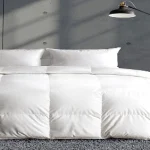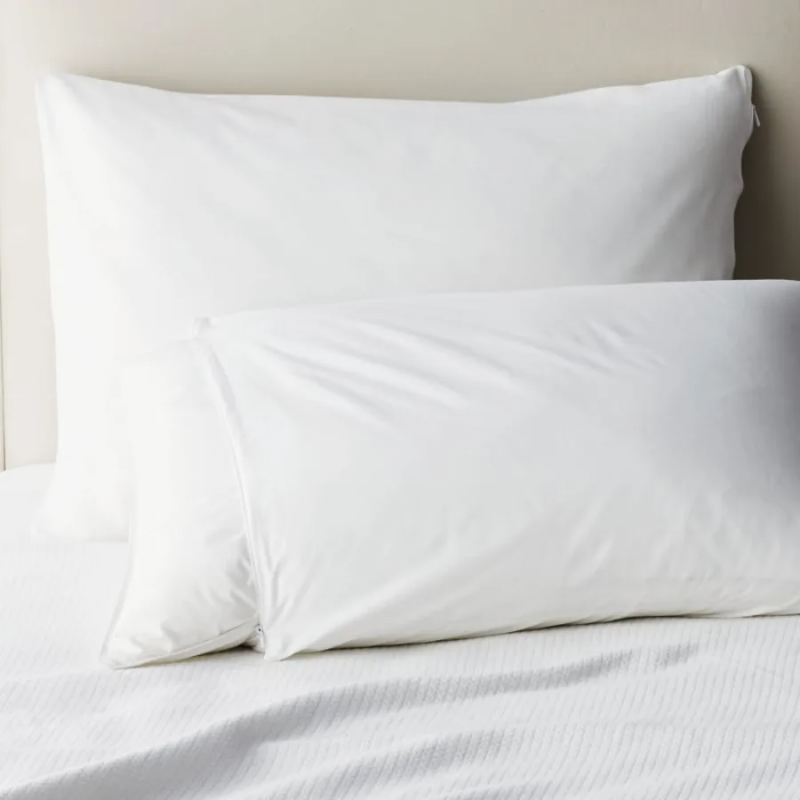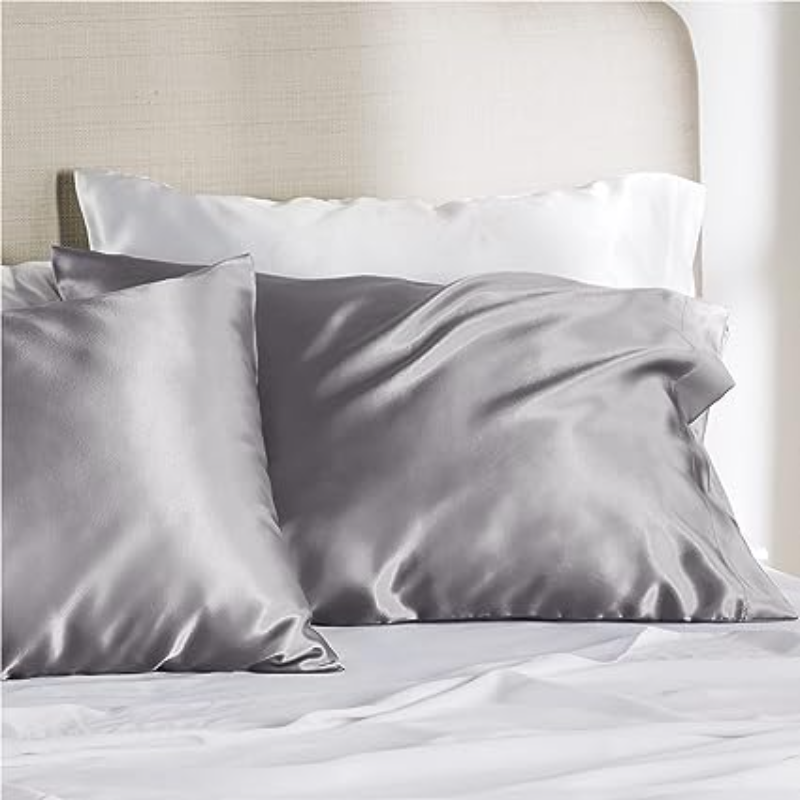
Choosing the Right Time for Your Down Comforter Purchase
October 7, 2023
Key Considerations for Finding Wholesale Bed Sheet Suppliers
October 9, 20231. Why aren’t cotton pillow covers the best choice?
2. What are pure cotton pillow covers?
3. Who shouldn’t use cotton pillow covers?
4. What is a silk pillowcase and satin pillowcase?
Why aren’t cotton pillow covers the best choice?
While cotton pillow covers have always been popular, it’s a question to think about whether they’re actually the right fit for your hair, skin, and sleep experience. In this article, we will explore the characteristics of cotton, silk, and satin pillowcases in detail, analyze their advantages and limitations, and provide professional advice and insights for those who hope to pursue a higher quality of sleep. By gaining an in-depth understanding of the properties of these different pillowcase materials, you will be able to make a more informed choice of bedding that best suits your needs for a more comfortable and rewarding resting experience.
Different types of pillowcases
Before we compare these pillowcases, let’s take a look at their features. If you don’t know much about the differences and characteristics of these fabrics, then read on and we’ll answer them for you.
What are pure cotton pillow covers?
When we look for comfortable bedding in our bedrooms, cotton fabrics are often the first choice. This is because pure cotton has many obvious advantages, such as durability, comfort, softness, and easy maintenance. Choosing a pure cotton pillowcase will ensure you enjoy these benefits at night. Pure cotton pillow covers are usually made of 100% cotton fabric and filled with pure cotton filling.
Benefits of pure cotton pillow covers
Excellent moisture absorption and breathability
Pure cotton pillow covers excel in moisture absorption and breathability. This natural fiber has excellent moisture absorption capabilities and is more breathable than synthetic materials. This means that pure cotton pillow covers will not retain moisture on the surface of the pillowcase that meets your skin.
Compared to other synthetic or oil-based fabrics, cotton pillow covers will typically absorb about 1/5 of their total weight before soaking. This feature allows the surface of the pillowcase to stay cooler, helping to provide a more comfortable sleep experience.
Soft Texture
The pure cotton material makes the surface of the pillowcase feel soft and smooth, giving it a plush and feather-like feel, and providing the necessary conditions for a comfortable sleep experience.
Natural Ingredients
Pure cotton is a natural material, environmentally friendly, and biodegradable. It is somewhat resistant to allergens and microorganisms, making it a good choice for people with sensitive skin or allergies to materials. There are also no synthetic materials involved in the manufacturing process, which makes cotton pillow covers safe for people of all skin types.
Easy to Clean
cotton pillow covers are very easy to clean and maintain compared to other fabrics. They are lightweight, machine washable, and dry relatively quickly. You also don’t need to wash it as often compared to other options.
Odorless
Most common pillowcase materials often have a strong and unpleasant odor after purchase, which may be due to airtight packaging or chemical manufacturing processes. However, cotton pillow covers don’t have these inconveniences because they are made from all-natural materials.
Cases where cotton pillow covers are not suitable
Friction: The rough texture of cotton pillow covers can cause hair and skin to rub, leading to breakage and split ends. Over time, this friction can also lead to the development of sleep lines and wrinkles.
Hygroscopicity: cotton pillow covers are highly hygroscopic and may strip your hair and skin of their natural oils and moisture, causing your hair to become dry and dull and your skin to become dehydrated, increasing your risk of breakouts and irritation.
If you have the following conditions, please consider replacing cotton pillow covers
1. Hair is prone to breakage, frizzy, or dryness.
2. The skin is sensitive or prone to acne.
3. Worry about premature aging or sleep problems.
4. Suffering from allergies or sensitivities.
5. Need to regulate temperature during sleep.
Other optional pillowcases
Silk: Silk pillowcases have a smooth and soft surface that reduces friction and damage and helps keep hair and skin moisturized. Silk is also hypoallergenic, making it suitable for people with allergies or sensitive skin.
Satin: Similar to silk, satin pillowcases have a smooth texture that minimizes friction and helps prevent hair breakage and skin irritation. While not as breathable or moisture-wicking as silk, satin is a more affordable option for those who want improved comfort.
Tencel: Made from sustainably sourced wood pulp, Tencel pillowcases are soft, smooth, and gentle on hair and skin. They’re also highly breathable and moisture-wicking to help keep you cool and comfortable all night long.
More information about silk fabrics
Silk fabric is a natural fiber produced by larvae and used for nesting. Silkworms secrete a mucus-like protein and pull it through their mouths to build their cocoons. To obtain usable silk, the cocoon must be unraveled, which usually involves the use of hot water, steam, or hot air, which may also result in the death of the silkworm. Therefore, it usually takes 2,500 silkworms to make one pound of raw silk.
More information about satin
Satin is a fabric, not the fiber itself. It is made by threading multiple threads through and through one thread, a pattern that gives the fabric a smooth, shiny side and a matte side. Satin can be made from a variety of different raw materials, including nylon, rayon, polyester, wool, and silk. Unlike silk, satin’s woven pattern gives it a similarly smooth feel.
Common advantages of silk pillowcases and satin pillowcases
Both pillowcase types offer similar benefits. Their silky surface reduces hair tangles and damage, making them ideal for curly hair. However, none of them are good at wicking moisture away from your hair and skin. Additionally, silk pillowcases are hypoallergenic and help prevent allergens and skin irritation.
The main differences between silk and satin
The main difference is the price. Because the production process of silk is more complicated, the price is higher. You may need to spend hundreds of dollars on a high-quality silk pillowcase. Satin pillowcases, on the other hand, are more affordable, and high-quality options can be found in the price range of less than $20. For most people, price is usually the deciding factor.
Cleaning and maintenance
No matter which pillowcase you choose, it needs to be washed regularly to prevent the build-up of bacteria and dirt. Make sure to read the washing instructions on the pillowcase to ensure proper cleaning methods.
In conclusion
When you’re thinking about adding new pillowcases to your bedding, cotton pillow covers are a great choice because they offer a variety of benefits. However, depending on your sleep preferences and skin health, cotton pillow covers may not be the best choice. Both silk and satin pillowcases have their own unique advantages. The most important thing is that there are a thousand Hamlets among a thousand people. The key is to choose the appropriate bedding material according to your own situation and needs.





